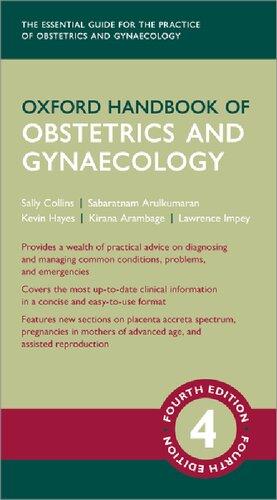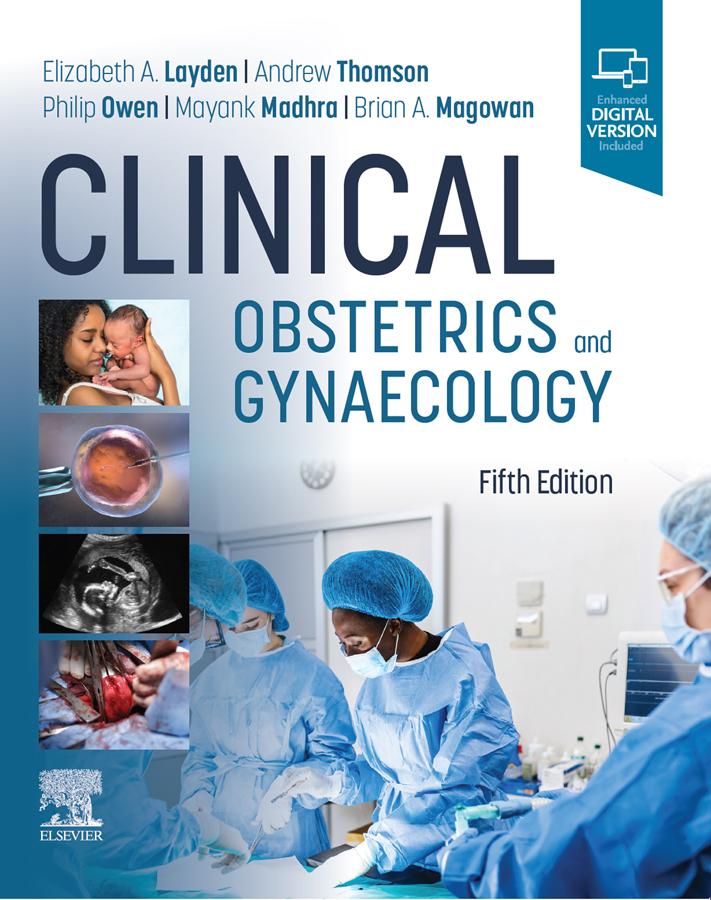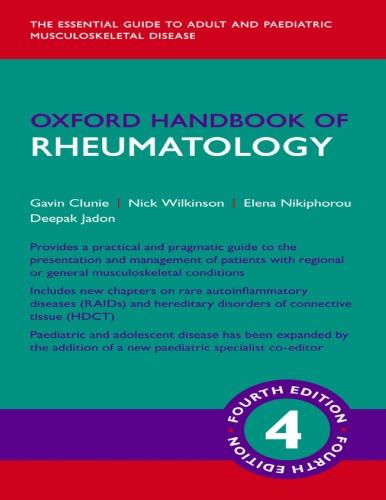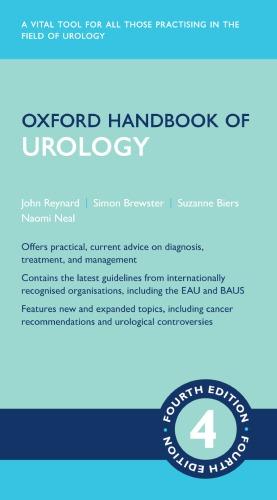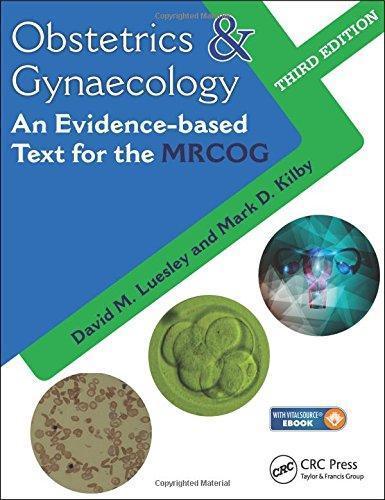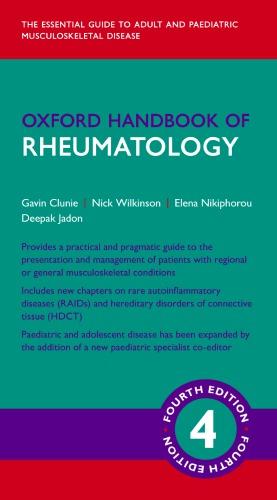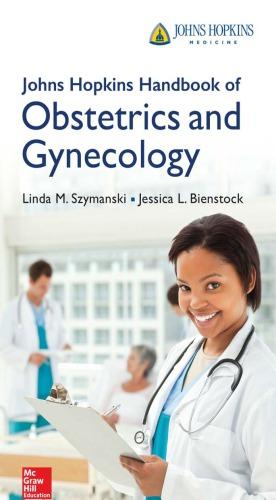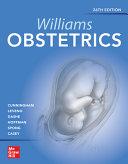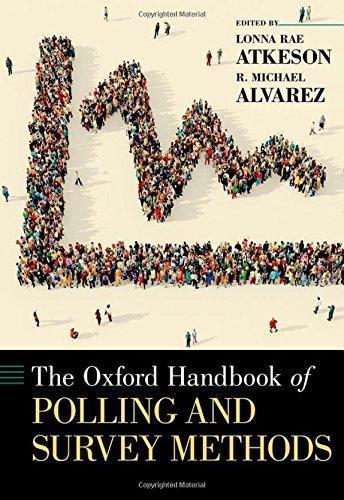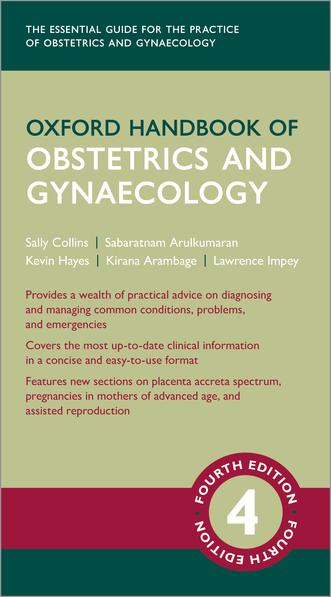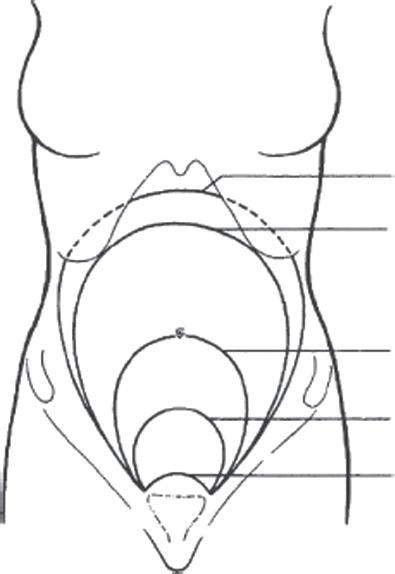Symbols and abbreviations
H warning
2 important
3 differential diagnosis controversial
E cross-reference
M website z video
° primary
2° secondary i increased
d decreased
l leading to ± with or without approximately
+ve positive
−ve negative
5-FU 5-fluorouracil
ABG arterial blood gases
ACE angiotensin converting enzyme
ACEI angiotensin converting enzyme inhibitor
ACTH adrenocorticotropic hormone
ADH antidiuretic hormone
AF atrial fibrillation
AFI amniotic fluid index
AFLP acute fatty liver of pregnancy
AFP alpha-fetoprotein
AIS androgen insensitivity syndrome
ALP alkaline phosphatase
ALT alanine transaminase
AMH anti-Müllerian hormone
ANA antinuclear antibodies
APH antepartum haemorrhage
APS antiphospholipid syndrome
AREDF absent/reversed enddiastolic flow
ARM artificial rupture of membranes
ASD atrial septal defect
AST aspartate aminotransferase
AVM arteriovenous malformation
BASHH British Association for Sexual Health and HIV
BCG bacillus Calmette–Guérin
bd twice daily
BEP bleomycin, etoposide, and cisplatin
βhCG beta-human chorionic gonadotropin
BMD bone mineral density
BMI body mass index
BOT borderline ovarian tumour
BP blood pressure
BPD biparietal diameter
BRCA breast cancer gene
BSO bilateral salpingo-oophorectomy
BV bacterial vaginosis
CA cancer antigen
CAH congenital adrenal hyperplasia
CAIS complete androgen insensitivity syndrome
CAP chest/abdomen/pelvis
cART combination antiretroviral therapy
CBAVD congenital bilateral absence of the vas deferens
CD Caesarean delivery
CEA carcinoembryonic antigen
CF cystic fibrosis
CGIN cervical glandular intraepithelial neoplasia
CI confidence interval
CIN cervical intraepithelial neoplasia
CMV cytomegalovirus
CNS central nervous system
CNST Clinical Negligence Scheme for Trusts
CO2 carbon dioxide
COCP combined oral contraceptive pill
COVID-9 coronavirus disease 209
CP cerebral palsy
CPAP continuous positive airway pressure
CPP chronic pelvic pain
CPR cerebroplacental ratio or cardiopulmonary resuscitation
CRL crown–rump length
CRP C-reactive protein
CS Caesarean section
CSF cerebrospinal fluid
CT computed tomography
CTG cardiotocography
CTPA computed tomography pulmonary angiogram
CVS chorionic villus sampling
CXR chest X-ray
DC dichorionic
DCDA dichorionic and diamniotic
DES diethylstilbestrol
DHEAS dehydroepiandrosterone sulphate
DIC disseminated intravascular coagulation
DSD disorder of sex development
DUB dysfunctional uterine bleeding
dVIN differentiated vulval intraepithelial neoplasia
EBL estimated blood loss
EBRT external beam radiotherapy
ECG electrocardiography/ electrocardiogram
ECV external cephalic version
EDD expected date of delivery
EFW estimated fetal weight
EP ectopic pregnancy
EPAU early pregnancy assessment unit
ESR erythrocyte sedimentation rate
ET endometrial thickness
ETT endotracheal tube
EUA examination under anaesthetic
FBC full blood count
FBS fetal blood sampling
FDA Food and Drug Administration
FF fetal fraction
FFP fresh frozen plasma
FGM female genital mutilation
FGR fetal growth restriction
FH fetal heart
FHR fetal heart rate
FIGO International Federation of Gynaecology and Obstetrics
FL femur length
FM fetal movements
FPR false-positive rate
FSD female sexual dysfunction
FSH follicle-stimulating hormone
FVS fetal varicella syndrome
GA general anaesthesia
GABA gamma-aminobutyric acid
GAD generalized anxiety disorder
GAS group A Streptococcus
GBS group B Streptococcus
GDM gestational diabetes mellitus
GFR glomerular filtration rate
GMC General Medical Council
GnRH gonadotropin-releasing hormone
GP general practitioner
GTD gestational trophoblastic disease
GTN gestational trophoblastic neoplasia
GTT glucose tolerance test
GUM genitourinary medicine
Hb haemoglobin
HbA adult haemoglobin
HbAc glycated haemoglobin
HBeAg hepatitis B e antigen
HbF fetal haemoglobin
HBsAg hepatitis B surface antigen
HBV hepatitis B virus
HC head circumference
hCG human chorionic gonadotropin
HELLP haemolysis, elevated liver enzymes, and low platelets
HFEA Human Fertilization and Embryology Authority
HG high-grade serous ovarian carcinoma
HIV human immunodeficiency virus
HLA human leucocyte antigen
HMB heavy menstrual bleeding
HPO hypothalamic–pituitary–ovarian
HPV human papillomavirus
hrHPV high-risk human papillomavirus
HRT hormone replacement therapy
HSG hysterosalpingography
HSV herpes simplex virus
HVS high vaginal swab
HyCoSy hysterosalpingo contrast sonography
IBD inflammatory bowel disease
ICD- International Classification of Diseases, th Revision
ICD-MM International Classification of Diseases for Maternal Mortality
ICG indocyanine green
ICP intrahepatic cholestasis of pregnancy
ICSI intracytoplasmic sperm injection
IDS interval debulking surgery
Ig immunoglobulin
IHC immunohistochemistry
IM intramuscular
IMB intermenstrual bleeding
IOL induction of labour
IUCD intrauterine contraceptive device
IUD intrauterine death
IUI intrauterine insemination
IUP intrauterine pregnancy
IUS intrauterine system
IV intravenous
IVF in vitro fertilization
IVU intravenous urography
JVP jugular venous pressure
LARC long-acting reversible contraceptive
LDH lactate dehydrogenase
LFT liver function test
LGSOC low-grade serous ovarian carcinoma
LH luteinizing hormone
LLETZ large loop excision of transformation zone
LMP last menstrual period
LMWH low-molecular-weight heparin
LN lymph node
LNG levonorgestrel
LVS low vaginal swab
MBRRACE-UK Mothers and Babies: Reducing Risk through Audits and Confidential Enquiry across the UK
MC monochorionic
MCA middle cerebral artery
MCDA monochorionic and diamniotic
MCHC mean corpuscular haemoglobin concentration
MCMA monochorionic and monoamniotic
MCV mean corpuscular volume
MDT multidisciplinary team
MEA microwave endometrial ablation
Mg magnesium
MMR measles, mumps, and rubella or mismatch repair
MPA medroxyprogesterone acetate
MRI magnetic resonance imaging
MRKH Mayer–Rokitansky–Küster–Hauser
MSAF meconium-stained amniotic fluid
MSU midstream sample of urine
MTCT mother-to-child transmission
NAAT nucleic acid amplification test
NEC necrotizing enterocolitis
NHSCSP NHS Cervical Screening Programme
NHSLA National Health Service Litigation Authority
NICE National Institute for Health and Care Excellence
NIPT non-invasive prenatal testing
NPV negative predictive value
NSAID non-steroidal antiinflammatory drug
NT nuchal translucency
NTD neural tube defect
OA occipito-anterior
OAB overactive bladder
od once daily
OGTT oral glucose tolerance test
OHSS ovarian hyperstimulation syndrome
OL occipito-lateral
OP occipito-posterior
PAIS partial androgen insensitivity syndrome
PAPP-A pregnancy-associated plasma protein-A
PAS placenta accreta spectrum
PCB postcoital bleeding
PCOS polycystic ovary syndrome
PCR protein:creatinine ratio or polymerase chain reaction
PE pulmonary embolism
PEFR peak expiratory flow rate
PEP postexposure prophylaxis
PET pre-eclampsia toxaemia
PG prostaglandin
PGE prostaglandin E
PGE2 prostaglandin E2
PID pelvic inflammatory disease
PlGF placental growth factor
PMB postmenopausal bleeding
PMRT Perinatal Mortality
Review Tool
PMS premenstrual syndrome
PO per os (by mouth)
POF premature ovarian failure
POMB/ACE cisplatin, vincristine, methotrexate, bleomycin, dactinomycin, cyclophosphamide, and etoposide
POP progestogen-only pill
PPH postpartum haemorrhage
PPROM preterm prelabour rupture of membranes
PPV positive predictive value
PROM prelabour rupture of membranes
PSV peak systolic velocity
PUL pregnancy of unknown location
PV per vaginam
Q ventilation
qds four times daily
RCOG Royal College of Obstetricians and Gynaecologists
RCT randomized controlled trial
Rh rhesus
RID relative infant dose
RMI risk of malignancy index
ROM rupture of membranes
RR rate ratio or relative risk
RRBSO risk-reducing bilateral salpingo-oophorectomy
RUQ right upper quadrant
SARC sexual assault referral centre
SARS severe acute respiratory syndrome
SC subcutaneous
SFH symphysis fundal height
sFlt- soluble FM-like tyrosine kinase
SGA small for gestational age
SHBG sex hormone-binding globulin
SLE systemic lupus erythematosus
SLN sentinel lymph node
SLNB sentinel lymph node biopsy
SMM surgical management of miscarriage
SNRI serotonin and norepinephrine reuptake inhibitor
SROM spontaneous rupture of membranes
SSRI selective serotonin reuptake inhibitor
STI sexually transmitted infection
STIC serous tubal intraepithelial carcinoma
T3 triiodothyronine
T4 thyroxine
TAS transabdominal scan
TB tuberculosis
Tc technetium
tds three times daily
TENS transcutaneous electrical nerve stimulation
TFT thyroid function test
TNF tumour necrosis factor
TOP termination of pregnancy
TSH thyroid-stimulating hormone
TTP thrombotic thrombocytopenic purpura
TTTS twin-to-twin transfusion syndrome
TV transvaginal
TVS transvaginal scan
TVT tension-free vaginal tape
U&E urea and electrolytes
UKFOCSS UK Familial Ovarian Cancer Screening Study
UN United Nations
UPSI unprotected sexual intercourse
USI urodynamic stress incontinence
USS ultrasound scan
UTI urinary tract infection
uVIN usual-type vulval intraepithelial neoplasia
V/Q ventilation/perfusion
VBAC vaginal birth after Caesarean
VDRL Venereal Disease Research Laboratory test
VE vaginal examination
VEGF vascular endothelial growth factor
VIN vulval intraepithelial neoplasia
VRIII variable rate intravenous insulin infusion
VSCC vulvar squamous cell carcinoma
VSD ventricular septal defect
VTE venous thromboembolism
vWF von Willebrand factor
VZIG varicella zoster immunoglobulin
WCC white cell count
WHO World Health Organization
WLE wide local excision
Contributors
Editors
Sally Collins
Consultant Obstetrician and Subspecialist in Maternal and Fetal Medicine, John Radcliffe Hospital, Oxford, and Professor of Obstetrics, Nuffield Department of Women’s and Reproductive Health, University of Oxford, Oxford, UK
Sabaratnam Arulkumaran
Professor of Obstetrics and Gynaecology, University of Nicosia Medical School, Cyprus, Professor Emeritus, St George’s, University of London, and Professor, Imperial College London, London, UK
Kevin Hayes
Consultant Obstetrician and Gynaecologist, St George’s University Hospital NHS Foundation Trust, London, UK
Kirana Arambage
Consultant Gynaecologist, John Radcliffe Hospital, Oxford, and Honorary Senior Clinical Lecturer, Nuffield Department of Women’s and Reproductive Health, University of Oxford, Oxford, UK
Lawrence Impey
Consultant Obstetrician and Subspecialist in Maternal and Fetal Medicine, John Radcliffe Hospital, Oxford, UK
Contributors to the fourth edition
W. Catarina Ang
Consultant Gynaecologist, Royal Women’s Hospital, Parkville, VIC, Australia
Chapter 2: Menopause
Ilyas Arshad
Consultant Gynaecologist, Liverpool University Hospitals NHS Trust, Liverpool, UK
Chapter 20: Contraception
Christian Becker
Associate Professor, Nuffield Department of Women’s and Reproductive Health, University of Oxford, Oxford, and Honorary Consultant Gynaecologist, Subspecialist in Reproductive Medicine and Surgery, John Radcliffe Hospital, Oxford, UK
Chapter 8: Subfertility and reproductive medicine
Charlotte Bennett
Consultant Neonatologist, Oxford University Hospitals NHS Foundation Trust, Oxford, UK
Chapter 8: Neonatal resuscitation
Abigail Brempah
Specialty Trainee in Obstetrics and Gynaecology, Lewisham and Greenwich NHS Trust, London, UK
Chapter 4: Gynaecological anatomy and development; Chapter 5: Normal menstruation and its disorders; Chapter 6: Early pregnancy problems; and Chapter 24: Miscellaneous gynaecology
Sarah Coleridge
Subspeciality Trainee in Gynaecological Oncology, Nottingham University Hospitals Trust, Nottingham, UK
Chapter 23: Benign and malignant gynaecological conditions
Ruth Curry
Consultant Obstetrician and Subspecialist in Maternal and Fetal Medicine, Oxford University Hospitals NHS Foundation Trust, Oxford, UK
Chapter 2: Benign and malignant tumours in pregnancy
Charlotte Frise
Consultant Obstetric Physician, Queen Charlotte’s and Chelsea Hospital, Imperial College
Healthcare NHS Trust, London, UK, and Lead Consultant Obstetric Physician for NW London
Chapter 5: Medical disorders in pregnancy
Suni Halder
Consultant Obstetric Anaesthetist, Oxford University Hospitals NHS Foundation Trust, Oxford, UK
Chapter 7: Obstetric anaesthesia
Rumana Islam
Consultant Gynaecologist, Barts
Health NHS Trust, London, UK
Chapter 8: Subfertility and reproductive medicine
Helen Jefferis
Consultant Gynaecologist/ Urogynaecologist, John Radcliffe Hospital, Oxford, UK
Chapter 22: Urogynaecology
Shamitha Kathurusinghe
Consultant Gynaecologist, Royal Women’s Hospital, Parkville, VIC, Australia
Chapter 2: Menopause
Bryn Kemp
Consultant Obstetrician and Maternal Medicine Lead, Royal Berkshire NHS Foundation Trust, Reading, UK
Chapter : Maternal and perinatal mortality
Kimmee Khan
Specialty Trainee in Obstetrics and Gynaecology, Epsom and St Helier University Hospitals NHS Trust, London, UK
Chapter 4: Gynaecological anatomy and development; Chapter 5: Normal menstruation and its disorders; Chapter 6: Early pregnancy problems; Chapter 9: Sexual assault; and Chapter 24: Miscellaneous gynaecology
Vicky Minns
Specialty Trainee in Obstetrics and Gynaecology, Epsom and St Helier University Hospitals NHS Trust, London, UK
Chapter 4: Gynaecological anatomy and development; Chapter 5: Normal menstruation and its disorders; Chapter 6: Early pregnancy problems; and Chapter 24: Miscellaneous gynaecology
Jo Morrison
Consultant Gynaecological Oncologist, Musgrove Park Hospital, Somerset NHS Foundation Trust, Taunton, UK
Chapter 23: Benign and malignant gynaecological conditions
Sanyal Patel
Consultant Obstetrician and Gynaecologist, Milton Keynes University Hospital, Milton Keynes, UK
Chapter 4: Infectious diseases in pregnancy
Pathiraja Pubudu
Consultant Gynaecologist/ Gynaecological Oncologist, Addenbrooke’s Hospital, Cambridge, UK
Chapter 7: Genital tract infections and pelvic pain
Jane Reavey
Senior Registrar, John Radcliffe Hospital, Oxford, UK
Chapter 7: Genital tract infections and pelvic pain
Fevzi Shakir
Consultant Gynaecologist, Royal Free Hospital, London, UK
Chapter 20: Contraception
Jasmine Tay
Consultant Obstetrician and Subspecialist in Maternal Fetal Medicine, Queen Charlotte’s Hospital, Imperial College NHS Trust, London, UK
Chapter 5: Medical disorders in pregnancy
Katy Vincent
Associate Professor, Senior Fellow in Pain in Women and Honorary Consultant Gynaecologist, Nuffield Department of Women’s and Reproductive Health, University of Oxford, John Radcliffe Hospital, Oxford, UK
Chapter 7: Genital tract infections and pelvic pain
Dilip Visvanathan
Consultant Gynaecologist, Barts Health NHS Trust, London, UK
Chapter 7: Genital tract infections and pelvic pain
Michael Yousif
Consultant in Liaison Psychiatry, West Middlesex University Hospital, London, UK
Chapter 3: Substance misuse and psychiatric disorders
Contributors to the second and third editions
Miss Karolina Afors
St George’s Hospital, London, UK
Dr Christian Becker
John Radcliffe Hospital, Oxford, UK
Dr Amy Bennett
Department of Genitourinary Medicine, Oxford University Hospitals, NHS Trust, Oxford, UK
Mrs Rebecca Black
John Radcliffe Hospital, Oxford, UK
Dr Shabana Bora
St George’s Hospital, London, UK
Dr Brian Brady
John Radcliffe Hospital, Oxford, UK
Mr Paul Bulmer
St George’s Hospital, London, UK
Mr Edwin Chandraharan
St George’s Hospital, London, UK
Dr Noan-Minh Chau
Specialist Registrar Rotation in Medical Oncology, London Deanery, UK
Dr Mellisa Damodaram
Queen Charlotte’s and Chelsea Hospital, London, UK
Miss Claudine Domoney
Chelsea and Westminster Hospital, London, UK
Dr Stergios K. Doumouchtsis
St George’s Hospital, London, UK
Dr Suzy Elniel
Chelsea and Westminster Hospital, London, UK
Dr Cleave W. J. Gass
St George’s Hospital, London, UK
Dr Ingrid Granne
John Radcliffe Hospital, Oxford, UK
Miss Catherine Greenwood
John Radcliffe Hospital, Oxford, UK
Mr Manish Gupta
John Radcliffe Hospital, Oxford, UK
Miss Pauline Hurley
John Radcliffe Hospital, Oxford, UK
Dr Nia Jones
Queens Medical Centre, Nottingham, UK
Miss Brenda Kelly
John Radcliffe Hospital, Oxford, UK
Dr Nigel Kennea
St George’s Hospital, London, UK
Dr Andy Kent
St George’s Hospital, London, UK
Dr Su-Yen Khong
John Radcliffe Hospital, Oxford, UK
Dr Emma Kirk
St George’s Hospital, London, UK
Dr Samatha Low
Royal Berkshire Hospital, Reading, UK
Dr Jo Morrison
Musgrove Park Hospital, Taunton, UK
Dr Neelanjana Mukhopadhaya
St George’s Hospital, London, UK
Dr Faizah Mukri
Specialist Registrar Rotation, London Deanery, UK
Dr Santosh Pattnayak
St George’s Hospital, London, UK
Dr Natalia Price
John Radcliffe Hospital, Oxford, UK
Dr Aysha Qureshi
Royal United Hospital, Bath, UK
Dr Devanna Rajeswari
St George’s Hospital, London, UK
Dr Gowri Ramanathan
St George’s Hospital, London, UK
Dr Margaret Rees
John Radcliffe Hospital, Oxford, UK
Dr Jackie Sherrard
Department of Genitourinary Medicine, Oxford University
Hospitals NHS Trust, Oxford, UK
Dr Lisa Story
John Radcliffe Hospital, Oxford, UK
Ms Louise Strawbridge
University College London, London, UK
Mr Alex Swanton
Royal Berkshire Hospital, Reading, UK
Dr Linda Tan
St George’s Hospital, London, UK
Dr Katy Vincent
John Radcliffe Hospital, Oxford, UK
Miss Cara Williams
University College London Hospital, UK
Dr Niraj Yanamandra
St Peter’s Hospital, Chertsey, UK
